While some scepticism remains around the wholesale migration to EVs, in effect, the debate is over. Governments around the world have signalled their intent to phase out internal combustion engines and although they would welcome more flexibility over the timeframe and further taxpayer-funded incentives, the global automotive industry is gearing up for the transition.
The new UK Government confirmed its direction of travel in last month’s Budget, by rubber-stamping a consultation to revive the original ban on the sale of most ICE cars in 2030 and extending fiscal incentives for fleet operators to electrify their car and van fleets.
For fleet operators, the question now is one of timing. Operational considerations are still uppermost in many fleet managers’ minds, but over the next three to four years – or in other words – one fleet replacement cycle, they will need to grapple with the practicalities of electrification.
And this process isn’t just about transitioning to EVs to tick the ESG box, embracing a more sustainable approach implies a 360-degree review of your entire transport and mobility operations.
The good news is the process of preparing for the transition is likely to reveal a whole raft of efficiencies and improvements that will make your fleet cleaner, greener and safer – even before you take delivery of the first of those shiny new EVs.
The approach to this process varies significantly between essential user fleets, where operational considerations remain paramount and perk car fleets where the switch to EVs is already well underway – largely shaped by a benign tax environment for salary sacrifice schemes.
User choosers lead transition to EVs
The bulk of evidence from user-chooser fleets suggests that perk fleets are realizing significant advantages by switching to electric vehicles in terms of reduced costs, lower emissions and high driver satisfaction.
According to the 2024 Ayvens Fleet Sustainability report, finance and professional services companies run the most sustainable fleets – characterized by a high proportion of EVs. Average CO2 emissions have now fallen below 100g/km across all survey participants, with the finance and professional services sector going from an average of 96.3g/km in 2021 to 66.6g/km in 2023.
But recent steep falls in the residual values of defleeted EVs in the face of continuing resistance from retail used buyers has created significant challenges for leasing companies and fleets who have purchased EVs outright.
According to market analysts at CAP HPI, resale values of used EVs have halved since September 2022 and used EVs are now cheaper to buy than their ICE equivalents.
Oversupply of three to four-year-old EVs in the used market remains an issue, with some quarters of the industry calling for further Government incentives to increase buyer confidence. The Society of Motor Manufacturers and Traders called on Government to halve VAT on the sale of new EVs, slash VAT on public charging to 5 per cent and postpone the imposition of VED on EVs next year.
Electrification of essential user and van fleets is a more complex process, with operational demands often meaning that electrification gets kicked into the long grass. This is evidenced by significantly slower uptake of electric vans, with registrations falling during 2024 – prompting calls for further incentives and improvements in charging infrastructure.
Weighing up the ‘Push’ and ‘Pull’ factors
For job need fleets, electrification typically involves a two-stage process: identify the optimum time to pivot then use data to work out how to execute the transition. For fleet managers still wavering, it’s useful to consider pros and cons before framing a strategy.
Push factors are informed by the downside risk of doing nothing: reduced availability and choice of ICE vehicles, increasing costs of ICE, increasing scrutiny of suppliers’ Scope 3 emissions, more widespread use of ULEZ in urban settings.
Pull factors include potentially lower SMR, fuel and whole life costs, dramatically reduced emissions, greater oversight of fleet mileage, enhanced reporting and data capture, happier and safer drivers.
It’s also vital to be aware of the unknowns and attempt to factor these into your analysis. These include the future trajectory of residual values on diesel, electric and petrol vehicles, the future tax treatment of vehicles, the cost of upgrading captive (depot-based) charging infrastructure and the costs of domestic and public charging.
PUSH Factors: downsides if you delay electrification
- Rising costs of ICE
- Declining availability of ICE vehicles
- Increasing scrutiny of suppliers’ Scope 3 emissions
- Reputational damage
- Extension of zero emissions ULEZ/ZEV in cities
PULL Factors: upsides of embracing electrification
- Lower TCO
- Lower servicing and maintenance costs
- Reduced emissions
- Greener public perception
- Happier drivers.
Unknowns:
- Future residual values
- Driver acceptance/resistance
- Costs of upgrading electricity infrastructure
- Costs of public charging
- Tax treatment of public/private charging
Dipping a toe in the water
For many essential user fleets, the outcome of this analysis will point to trialling a limited number of EVs to learn about the real-world operational performance and limitations of EVs in your fleet’s specific use case.
For this exercise to provide useful, actionable insights, it’s vital to collect as much data as possible on the operation of these test vehicles, which is where a specialist telematics partner can add value – both in terms of aggregating and analysing the data.
The key considerations include whether essential user vehicles can be charged overnight at home, whether public charging infrastructure can support your journey patterns and whether routes and work schedules can be fine-tuned to dovetail with charging periods – for example during drivers’ lunchtimes or comfort breaks.
“Fleet managers need to get a really clear understanding of how those vehicles are being used in the real world and under what operating conditions,” said Aaron Jarvis, Associate Vice President, Sales and Business Development, UK & Ireland at Geotab. “Simply handing over a couple of EVs to your drivers and letting them drive them in the same way as they would drive an ICE will likely get negative comments about range. But when you drill down into the driving data, you will probably find some insights about why they perceive the range is not sufficient.
“Job roles may need re-engineering to accommodate electrification and this is where the fleet manager really has the opportunity to step up and become a change manager by using data to identify which vehicles can be electrified and optimizing routes to deliver a 30 per cent efficiency gain along with a dramatic reduction in emissions.
“That same data can also prevent costly mistakes, by identifying which vehicles aren’t currently suitable for electrification and also what size of vehicle they really need. One of the most valuable insights we’ve gained recently is that a lot of early EV adopters have oversized their vehicles and now realise a smaller, cheaper vehicle could do the job just as well.”
The outcomes from this appraisal process – plus valuable driver feedback – then need to be analysed to calculate which vehicles can be replaced now and what are the cost implications. A degree of operational flexibility is usually required to accommodate the transition: for example, redeploying recently acquired relatively low-mileage ICE vehicles to high mileage roles, so that older vehicles due for replacement can be switched for EVs.
For depot-based fleets, upgrading electric infrastructure to support captive charging is a major consideration and the costs and feasibility of upgrading need to be evaluated. The first port of call in this use case should usually be the local electricity Distribution Network Organisation to assess the feasibility and timescales for upgrading electricity supplies to cope with increased demand.
Provision of EV chargers at work can be a significant incentive for company car drivers to switch to EVs and your customers and suppliers may welcome the ability to charge at your premises when they attend client meetings, but if the charging is provided free of charge, it’s important to check the Benefit-in-Kind tax implications with HMRC
Despite ongoing operational concerns, Geotab estimates that two-thirds of fleet vehicles currently operating in the UK could be replaced with EVs. The company calculated that private and public sector fleets could reduce the total cost of ownership per vehicle by £13,279 over a seven-year period, equating to a saving of £876,414 on a 100-vehicle fleet.
Overcoming operational obstacles
Driver resistance, range anxiety, the complexities of just-in-time distribution networks and the perceived challenges of finding reliable EV chargers has meant many essential user fleets have put electrification in the box marked ‘too difficult’ but time is running out for fleet managers to manage an orderly transition to EVs.
In a rapid turnaround over the last two years, the construction industry now has the highest share of BEVs thanks to rapid adoption with almost a third of vehicles (32%) now fully electric.
EV charging solutions specialist Mer has help electrify the fleets of companies as diverse as Keltruck Ltd, Costain and Cumbria, Northumberland and Tyne and Wear NHS Foundation Trust.
Colin Hall, Strategic Sales Manager, Workplace and Fleet at Mer UK said: “We find that perceived barriers are largely down to taking a step into the unknown. I would say that there aren’t any real barriers to fleet electrification.
“There are challenges but over time we have found that these have shifted from attitudinal challenges and a resistance to change, to more structural and practical challenges, like ‘where will we put our chargers?’, ‘how much power will we need?’ and ‘how will this work for our fleet or in our depot?’”
Beverley Wise, Webfleet Regional Director for Bridgestone Mobility Solutions acknowledged that essential user fleets faced unique greater challenges in adopting e-mobility due to complex operational, service delivery and cost considerations.
“The business case for these operators has become increasingly compelling,” said Wise. “Innovations in EV fleet management solutions are addressing key operational challenges, empowering fleet managers with real-time data insights that pinpoint vehicles suitable for EV replacement and optimizing operations with route planning tools that take account of vehicle battery levels, capacity, energy consumption, remaining driving ranges and charge point locations.”
The wider benefits of planning for electrification
Drilling down into the minute detail of your transport and mobility operations often reveals potential for efficiencies and cost savings as you seek to optimise utilisation. Making greater use of tracking and telemetry will often flag up anomalies or inefficiencies which can be managed to save time and money.
Running an EV fleet also requires a higher level of route planning and the nature of battery charging means that drivers are likely to need to take more frequent breaks to charge their vehicles. Most journeys of more than 250 miles will require a recharging stop, but it may be more efficient to plan for two shorter pauses than one long stop.
This presents an opportunity to introduce targeted driver training to ensure that employees’ driving styles are efficient and economical and drivers are utilising their downtime during charging most efficiently.
In the future, more widespread adoption of vehicle telemetry and reporting could usher in a new era of predictive maintenance, where wear and tear components are replaced before they fail, which could drive further efficiencies by reducing downtime.
Beyond the EV transition
By the time the ban on the sale of most ICE vehicles comes into effect in 2030, research by insurer Direct Line indicates that most UK fleets will be operating 100 per cent electric or battery electric vehicles.
This step change is likely to shift the focus on emissions reduction to other automotive consumables which have a significant environmental impact: such as brake pads and especially tyres.
Regenerative braking systems fitted to EVs tend to reduce the reliance on friction brakes, but EVs tend to get through tyres more quickly than their ICE equivalents owing to their extra weight and torque delivery characteristics.
According to scientists at London’s Imperial College, the 2.6 million vehicles on the roads of the Capital generate 9,000 tonnes of tyre wear particulates a year.
The new Euro 7 emissions standard comes into force in 2025, placing new limits on the amount of Non-Exhaust Emissions (NEE) from tyres and brake pads.
As a result, tyre makers are investing heavily in more sustainable manufacturing, superior fuel economy with less wear and responsible end of life recycling. Low rolling resistance tyres like Bridgestone’s Ecopia were initially designed to improve the range of EVs, but today these tyres are being fitted to improve the fuel economy of ICE vehicles too.
Bridgestone is also developing an ‘airless’ tyre which – while eliminating punctures (and the associated downtime) – embodies low rolling resistance and is made from 100 per cent recyclable materials.
A sustainable transport revolution?
The incoming Government published a vision for a decade of investment in the UK’s strategic transport network within weeks of coming into office. The Rail and Urban Transport Review identifies five priorities to accelerate the delivery of transport infrastructure and services linked directly to a wider industrial strategy designed to drive economic growth across the UK.
The report’s authors recognize that the impacts of this new approach are unlikely to be felt much before the end of the new administration’s first term, but its ambitions may have implications for both essential user and perk car fleets.
The report takes widespread adoption of EVs as a given but is far more focused on the delivery of rail and bus infrastructure. Within this context, by the end of this decade, the debate may have moved on to the extent that the company car is just one facet of a multi-modal approach to corporate mobility.
Salary sacrifice schemes are currently driving a significant proportion of company car sales – and the vast majority of these are electric. But at a time when Millennials and Gen Z are more comfortable renting or subscribing to on-demand services, if the new Government succeeds in delivering a step change in public transport provision, by the end of this decade, access to an EV may just be one strand of a new Mobility as a Service (MaaS) approach to employee travel.



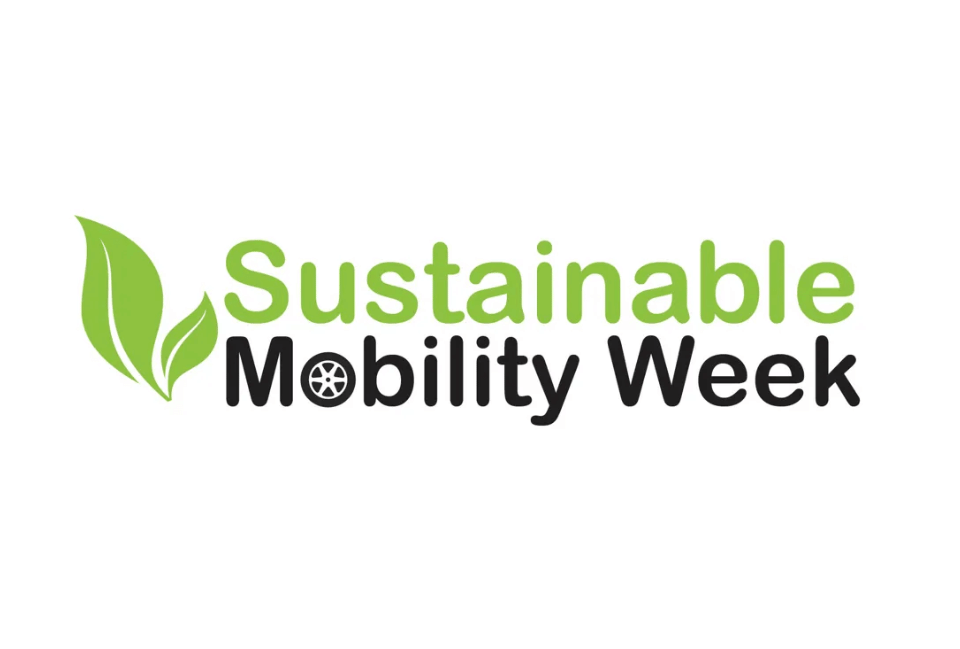


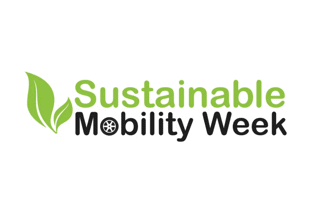
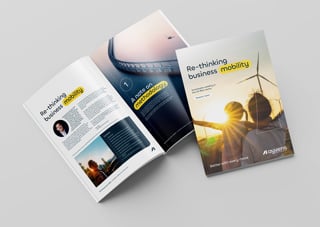
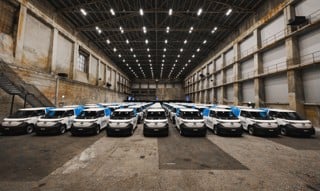



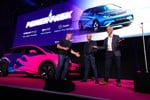





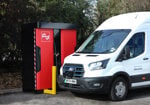




Login to comment
Comments
No comments have been made yet.